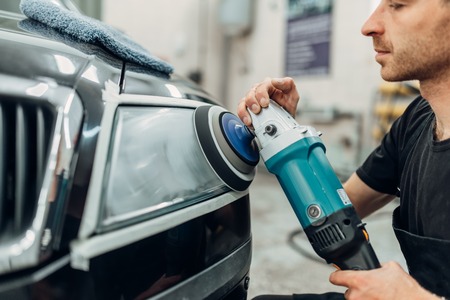1. Introduction
Weather plays a significant role in how well your brakes perform. Whether youre driving in the summer heat, heavy rain, or icy winter roads, different weather conditions can impact braking distance and overall vehicle safety. Understanding these effects can help you take the necessary precautions to stay safe on the road.
How Weather Conditions Affect Braking Performance
Various weather conditions can change the way your brakes respond. Factors such as temperature, moisture, and road surface conditions all influence how quickly you can stop your vehicle. Below is an overview of how different weather conditions affect braking performance:
| Weather Condition | How It Affects Braking |
|---|---|
| Rain | Wet roads reduce tire traction, increasing stopping distance. Water can also cause brake fade if excessive moisture affects the brake pads. |
| Snow | Snow-covered roads are slippery, making it harder for tires to grip and increasing the risk of skidding when braking. |
| Ice | Ice creates the most dangerous conditions for braking, as tires struggle to grip the road, leading to significantly longer stopping distances. |
| Extreme Heat | High temperatures can cause brake pads and rotors to overheat, leading to brake fade and reduced braking efficiency. |
| Fog | Fog itself doesnt directly affect braking, but reduced visibility means drivers may react more slowly, making quick and effective braking crucial. |
Why Understanding This Is Crucial for Safe Driving
Being aware of how different weather conditions impact braking performance allows you to adjust your driving behavior accordingly. For example, in wet or icy conditions, increasing your following distance and braking gently can help reduce the risk of collisions. Additionally, regular brake maintenance ensures that your braking system is always in optimal condition to handle different weather challenges.
2. How Rain and Wet Roads Impact Braking
Understanding Hydroplaning
When roads are wet, water can create a thin layer between your tires and the pavement. This phenomenon is called hydroplaning. It happens when your tires cant channel water away quickly enough, causing your vehicle to lose grip and slide uncontrollably. The faster you drive on wet roads, the higher the risk of hydroplaning.
Reduced Tire Traction
Rainwater reduces the friction between your tires and the road surface. Unlike dry pavement, wet roads make it harder for your tires to grip properly. This reduced traction increases the risk of skidding, especially during sudden braking or sharp turns.
Extended Stopping Distances
Because of reduced traction, stopping distances increase significantly on wet roads. Your car needs more time and space to come to a complete stop, which means braking too late can lead to accidents.
Comparison of Stopping Distances: Dry vs. Wet Roads
| Road Condition | Approximate Stopping Distance at 60 mph |
|---|---|
| Dry Road | 120-140 feet |
| Wet Road | 180-200 feet |
How to Stay Safe
- Drive Slowly: Reducing your speed helps minimize the risk of hydroplaning and gives you more control.
- Increase Following Distance: Leave extra space between your car and the vehicle in front to allow for longer stopping distances.
- Avoid Sudden Movements: Steer, accelerate, and brake gently to maintain better control on wet roads.
- Check Your Tires: Proper tread depth and inflation improve traction and reduce the risk of sliding.
- Use Headlights: Visibility is crucial in rainy weather. Turn on your headlights so other drivers can see you easily.

3. Braking Challenges in Snowy and Icy Conditions
How Ice and Snow Reduce Grip
Snow and ice create a slippery surface that reduces tire grip. This happens because the layer of ice or packed snow prevents your tires from making solid contact with the road. Without enough friction, your tires struggle to grip the surface, making it harder to stop or control the vehicle.
Increased Stopping Distances
When roads are icy or covered in snow, your stopping distance significantly increases. On dry pavement, your car may come to a stop in a normal distance, but on ice, that distance can be doubled or even tripled. Below is a general comparison of stopping distances under different conditions:
| Road Condition | Stopping Distance (at 30 mph) |
|---|---|
| Dry Pavement | 45-60 feet |
| Wet Pavement | 90-120 feet |
| Snowy Road | 150-300 feet |
| Icy Road | 600+ feet |
How ABS Helps in Snowy and Icy Conditions
Anti-lock braking systems (ABS) are designed to keep your wheels from locking up when you brake hard. This is crucial on icy or snowy roads because locked-up wheels slide uncontrollably. ABS helps by automatically pumping the brakes for you, allowing your tires to maintain some traction and helping you steer while stopping.
What to Do When Braking on Ice or Snow
- Press the brake pedal firmly but do not pump it manually if your vehicle has ABS.
- If your car does not have ABS, gently pump the brakes to avoid locking up the wheels.
- Always increase your following distance to give yourself more room to stop.
- Slow down before turns and avoid sudden braking to reduce the risk of skidding.
Final Tip
Always drive cautiously in wintry conditions and be prepared for longer braking distances. Keeping your tires in good condition and driving at a safe speed can make a huge difference when roads are slippery.
4. Four. The Effect of Hot Weather on Braking Performance
When temperatures rise, your vehicles braking system can be put under significant stress. Extreme heat affects the way brakes function, potentially reducing their effectiveness and putting you at greater risk on the road. Understanding how heat impacts your brakes and taking proper precautions can help keep you safe while driving in hot conditions.
How Extreme Heat Can Lead to Brake Fade
Brake fade occurs when excessive heat reduces the friction between your brake pads and rotors, making it harder for your vehicle to slow down or stop. This happens because high temperatures cause brake pads and rotors to overheat, leading to a temporary loss of braking power.
Causes of Brake Fade in Hot Weather
- Friction Heat Build-Up: Repeated braking, especially during downhill driving or stop-and-go traffic, generates more heat than usual.
- Brake Fluid Boiling: High temperatures can cause brake fluid to overheat and form bubbles, reducing hydraulic pressure and braking efficiency.
- Worn Brake Components: Older or worn-out brake pads and rotors are more prone to overheating and losing their effectiveness.
How to Prevent Brake Fade in Hot Climates
To reduce the risk of brake fade, follow these important steps:
| Preventive Measure | How It Helps |
|---|---|
| Use Engine Braking | Downshifting to lower gears can help control speed without overusing your brakes. |
| Upgrade to High-Performance Brake Pads | Performance-grade brake pads resist heat better and last longer in high temperatures. |
| Regularly Check Brake Fluid | Ensure brake fluid is at the correct level and replace it if it appears dark or contaminated. |
| Take Breaks During Long Drives | Allowing your brakes to cool down periodically can help prevent excessive heat buildup. |
Why Brake Maintenance Is Crucial in Hot Conditions
Maintaining your braking system is essential, especially in areas where temperatures frequently rise. Heat-related brake issues can be mitigated by staying on top of routine inspections and replacing worn components promptly. Additionally, using the right type of brake fluid and pads for your climate can improve overall brake performance and prevent dangerous situations on the road.
5. Best Practices for Safe Braking in Any Weather
Weather conditions can have a significant impact on braking performance, making it essential to adjust your driving habits to stay safe. By maintaining your vehicle, adjusting your speed, and keeping a safe distance from other cars, you can reduce the risk of accidents in rain, snow, and other hazardous conditions. Below are some best practices to help ensure safe braking in any weather.
Maintain Your Tires and Brakes
Your tires and brakes play a crucial role in stopping your vehicle safely. Regular maintenance ensures that they perform well in all conditions.
Check Tire Tread and Pressure
- Ensure your tires have sufficient tread depth to maintain proper traction on wet or slippery roads.
- Check tire pressure regularly, as cold weather can cause tires to lose pressure, affecting braking performance.
Inspect and Replace Brake Components
- Listen for squeaking or grinding sounds, which may indicate worn brake pads.
- Replace brake pads and rotors as needed to maintain optimal braking response.
Adjust Your Speed Based on Conditions
Driving at the right speed for road and weather conditions is essential to maintaining control and ensuring safe braking distances.
| Weather Condition | Recommended Speed Adjustment |
|---|---|
| Rainy or Wet Roads | Reduce speed by at least 10-20% to account for reduced traction. |
| Snowy or Icy Roads | Slow down by at least 50% and avoid sudden braking. |
| Foggy Conditions | Reduce speed significantly and use low beams for visibility. |
Keep a Safe Following Distance
Maintaining a safe distance from the vehicle in front of you ensures that you have enough time to react and stop safely.
Follow the Three-Second Rule
- In normal driving conditions, keep at least three seconds of following distance.
- Pick a stationary object and count the seconds it takes for you to reach it after the car in front passes it.
Increase Distance in Bad Weather
- In rain or wet conditions, increase following distance to at least four to five seconds.
- In snow or icy conditions, maintain at least six to ten seconds of distance for added safety.
Conclusion
By taking the right precautions, such as maintaining your brakes and tires, adjusting speed based on road conditions, and keeping a safe following distance, you can significantly improve your braking performance in any weather. Practicing these safe driving habits will help prevent accidents and ensure a safer driving experience for you and others on the road.


